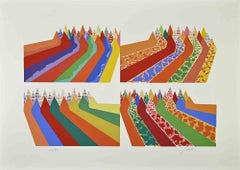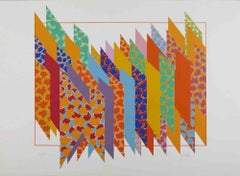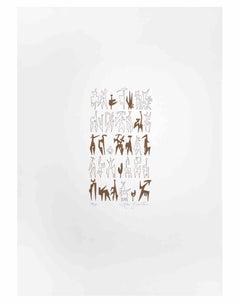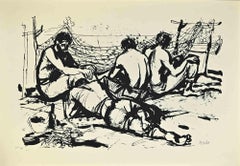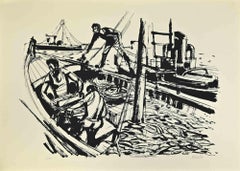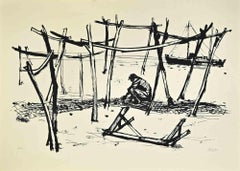1970s Screen Print
1970s Abstract Abstract Prints
Screen
1970s Abstract Abstract Prints
Screen
1970s Contemporary Abstract Prints
Screen
1970s Contemporary Abstract Prints
Screen
1970s Modern Figurative Prints
Screen
1970s Modern Figurative Prints
Screen
1970s Modern Figurative Prints
Screen
1970s Modern Figurative Prints
Screen
1970s Modern Figurative Prints
Screen
1970s Modern Figurative Prints
Screen
1960s Abstract Abstract Prints
Screen
1970s Contemporary Figurative Prints
Screen
1970s Abstract Geometric Abstract Prints
Paper, Screen
1970s Contemporary Figurative Prints
Screen
1970s Contemporary Figurative Prints
Screen
1970s Contemporary Figurative Prints
Screen
1970s Contemporary Figurative Prints
Screen
1970s Contemporary More Prints
Screen
1970s Contemporary Figurative Prints
Screen
1970s Abstract Abstract Prints
Screen
1970s Abstract Abstract Prints
Screen
1970s Contemporary Figurative Prints
Screen
1970s Abstract Abstract Prints
Paper, Screen
1970s Abstract Abstract Prints
Screen
1970s Abstract Abstract Prints
Screen
1970s Abstract Abstract Prints
Screen
1970s Abstract Abstract Prints
Screen
1970s Abstract Abstract Prints
Paper, Screen
1970s Abstract Abstract Prints
Paper, Screen
1970s Contemporary Abstract Prints
Screen
1970s Modern Figurative Prints
Screen
1970s Contemporary Abstract Prints
Screen
1970s Contemporary Abstract Prints
Screen
1970s Contemporary Abstract Prints
Screen
1970s Abstract Abstract Prints
Screen
1970s Abstract Abstract Prints
Screen
1970s Contemporary Landscape Prints
Screen
1990s Abstract Abstract Prints
Screen
1970s Contemporary Figurative Prints
Screen
1970s Contemporary Figurative Prints
Screen
1970s Contemporary Figurative Prints
Screen
1970s Contemporary Figurative Prints
Screen
1970s Contemporary Figurative Prints
Screen
1970s Op Art Abstract Prints
Screen
1970s Modern Figurative Prints
Screen
1970s Contemporary Figurative Prints
Screen
1970s Modern Abstract Prints
Screen
1970s Abstract Abstract Prints
Screen
1970s Abstract Abstract Prints
Screen
1970s Abstract Abstract Prints
Screen
1970s Contemporary Figurative Prints
Screen
1970s Op Art Abstract Prints
Screen
1970s Modern Abstract Prints
Screen
1970s Contemporary Abstract Prints
Screen
1970s Op Art Abstract Prints
Screen
1970s Abstract Geometric Abstract Prints
Screen
1970s Op Art Abstract Prints
Screen
1970s Op Art Abstract Prints
Screen
1970s Op Art Abstract Prints
Screen
1970s Op Art Abstract Prints
Screen
- 1
1970s Screen Print For Sale on 1stDibs
How Much is a 1970s Screen Print?
Finding the Right Prints And Multiples for You
Decorating with fine art prints — whether they’re figurative prints, abstract prints or another variety — has always been a practical way of bringing a space to life as well as bringing works by an artist you love into your home.
Pursued in the 1960s and ’70s, largely by Pop artists drawn to its associations with mass production, advertising, packaging and seriality, as well as those challenging the primacy of the Abstract Expressionist brushstroke, printmaking was embraced in the 1980s by painters and conceptual artists ranging from David Salle and Elizabeth Murray to Adrian Piper and Sherrie Levine.
Printmaking is the transfer of an image from one surface to another. An artist takes a material like stone, metal, wood or wax, carves, incises, draws or otherwise marks it with an image, inks or paints it and then transfers the image to a piece of paper or other material.
Fine art prints are frequently confused with their more commercial counterparts. After all, our closest connection to the printed image is through mass-produced newspapers, magazines and books, and many people don’t realize that even though prints are editions, they start with an original image created by an artist with the intent of reproducing it in a small batch. Fine art prints are created in strictly limited editions — 20 or 30 or maybe 50 — and are always based on an image created specifically to be made into an edition.
Many people think of revered Dutch artist Rembrandt as a painter but may not know that he was a printmaker as well. His prints have been preserved in time along with the work of other celebrated printmakers such as Pablo Picasso, Salvador Dalí and Andy Warhol. These fine art prints are still highly sought after by collectors.
“It’s another tool in the artist’s toolbox, just like painting or sculpture or anything else that an artist uses in the service of mark making or expressing him- or herself,” says International Fine Print Dealers Association (IFPDA) vice president Betsy Senior, of New York’s Betsy Senior Fine Art, Inc.
Because artist’s editions tend to be more affordable and available than his or her unique works, they’re more accessible and can be a great opportunity to bring a variety of colors, textures and shapes into a space.
For tight corners, select small fine art prints as opposed to the oversized bold piece you’ll hang as a focal point in the dining area. But be careful not to choose something that is too big for your space. And feel free to lean into it if need be — not every work needs picture-hanging hooks. Leaning a larger fine art print against the wall behind a bookcase can add a stylish installation-type dynamic to your living room. (Read more about how to arrange wall art here.)
Find fine art prints for sale on 1stDibs today.
- 1stDibs ExpertSeptember 25, 2019
Screen printing (or serigraphy) involves forcing ink onto a surface through a screen made of fine material to form a picture or pattern.
- What was worn in the 1970s?1 Answer1stDibs ExpertFebruary 22, 2021Fashion during the 1970s included lots of T-shirts, cardigans, kimonos, graphic tees, jeans, khakis, and vintage clothes. In the mid-1970s, other fashion highlights included puffy skirts and shirts with flowy sleeves.
- 1stDibs ExpertApril 5, 2022Yes, Andy Warhol is one of the most famous artists to work with screen printing, so much so that the technique is frequently associated with him. He first began working with it in 1962, and used it to create his photographic screen prints. Shop an array of Andy Warhol art on 1stDibs.
- 1stDibs ExpertApril 5, 2022Yes, sequins were indeed popular in the 1970s and could be seen on the dancefloors and discos of the time, along with other popular fabrics like velvet and satin. Sequins and hot pants were the go-to outfit of the disco-glam decade. Shop iconic vintage and contemporary sequin clothing from some of the world’s top boutiques on 1stDibs.
- Was velvet used in the 1970s?1 Answer1stDibs ExpertJune 15, 2023Yes, velvet was used in the 1970s. Fashion designers used the fabric to produce dresses, bell bottoms, flowy kimonos and other pieces. Furniture makers often used it as the upholstery on sofas and armchairs. On 1stDibs, shop a variety of pieces from the 1970s.
- What is 1970s furniture called?1 Answer1stDibs ExpertMarch 15, 2024What 1970s furniture is called varies. Generally, you may see pieces produced during the decade classified as "vintage" or "retro" furniture. During the 1970s, some makers continued to produce furniture that boasted the characteristics of mid-century modern works. The disco era yielded furnishings with organic, often rounded shapes, unadorned silhouettes, clean lines and a mix of materials. The showy leather furniture of the 1970s, which was both sexy and comfortable, is seeing a resurgence in today’s homes. Shop a wide variety of vintage 1970s furniture on 1stDibs.
- Are the 1970s mid-century?1 Answer1stDibs ExpertFebruary 17, 2023No, the 1970s are generally not considered to fall within the era identified as mid-century. With respect to mid-century modern design, while there is some debate between collectors and design experts about the specific time period that saw the emergence of the style, most furniture enthusiasts agree that by the late 1960s, interest in MCM had largely declined. Writer Cara Greenberg, who coined the term “mid-century modernism,” suggests that “the period from the end of World War II to 1960 – from V-J Day to JFK – was the heyday of innovative furniture design in America.” Mid-century modern furniture is characterized by clean lines and inviting, organic shapes. Furniture makers of the era believed that good design was an essential part of good living. Find a variety of vintage mid-century modern furniture and decorative objects on 1stDibs.
- 1stDibs ExpertApril 5, 2022To tell if a dress is from the 1960s or 1970s, first look for a label. You may be able to determine the approximate date of the dress simply by researching the designer using reputable online sources. Also, check the zippers. Dresses from the 1960s will usually have metal or nylon zippers. Ones from the 1970s are more likely to be plastic. You'll find a large selection of vintage dresses on 1stDibs.
- 1stDibs ExpertApril 5, 2022Go-go boots were fashionable in the late 1960s through the 1970s. A calf-length to knee-length boot became synonymous with 1960s and 1970s fashion and is still highly coveted today by fashion enthusiasts. Shop a wide range of vintage go-go boots on 1stDibs.
- 1stDibs ExpertApril 5, 2022In 1967, Andy Warhol began publishing a series of screen prints through his printing company, Factory Additions. Using a publicity image of Marilyn Monroe, Warhol printed 10 images from five screens: one was the original photograph and four others emphasized different areas of color to reflect Monroe’s vibrant personality. Browse a selection of Andy Warhol art, prints and photos from some of the world’s top dealers on 1stDibs.
- 1stDibs ExpertMay 5, 2023Which clothing style was most popular in the discos in the 1970s is open to debate. Some of the trends of the discotheque scene included sleeveless, sequined tops paired with bell bottoms and knee-length halter dresses topped off with tall go-go boots. For men, jumpsuits and leisure suits were the favorite looks. Both men and women often wore shoes with chunky heels and thick platforms. On 1stDibs, find an assortment of 1970s vintage clothing and accessories.
- 1stDibs ExpertJanuary 27, 2025The designer who became famous with her wrap dresses in the 1970s is Diane von Furstenberg. She debuted her first example in 1974. When creating the Wrap dress, von Furstenberg drew inspiration from the skirts worn by ballerinas. In celebration of the 40th anniversary of the now-iconic dress, an exhibit called Diane von Furstenberg: Journey of a Dress was held at museums in the United States and abroad. On 1stDibs, explore a range of Diane von Furstenberg apparel and accessories.
- 1stDibs ExpertApril 5, 2022After the success of his “Sol” series in the 1960s, Richard Anuszkiewicz began to focus on his “Centered Square” designs in the mid-1970s. He used interacting colors to change the perception of the art in the eye of the viewer. You can shop a selection of Richard Anuszkiewicz pieces from some of the world’s top art dealers on 1stDibs.
Read More
Joan Mitchell’s Rare, Late-Career Diptych Buzzes with Life
Beneath the inky blackness, the painter’s irrepressible energy electrifies this pair of intaglio prints.
The 1stDibs Guide to Types of Abstract Art
Get to know the key movements and artists who have influenced visual culture for more than a century.
Romare Bearden’s Humanity Infuses His Bright, Bold Art
Through collage, painting and printmaking, the artist foregrounded Black life in America in revolutionary new ways.
Andy Warhol and Suzie Frankfurt’s ‘Wild Raspberries’ Cookbook Is an Artful, Fanciful Delight
This set of recipes and original prints might not make you a better chef. But it will make you smile.
Art Brings the Drama in These Intriguing 1stDibs 50 Spaces
The world’s top designers explain how they display art to elicit the natural (and supernatural) energy of home interiors.
Welcome (Back) to the Wild, Wonderful World of Walasse Ting
Americans are rediscovering the globe-trotting painter and poet, who was connected to all sorts of art movements across a long and varied career.
Shapero Modern’s Director Tells Us All about 20th-Century Prints
Tabitha Philpott-Kent knows a lot of art multiples. Here, the London gallery director talks about what makes printmaking so fabulous.
Yoshitomo Nara Puts a Punk Rock Twist on the Traditional Prints of His Ancestors
The forever-rebellious Japanese artist craftily defaces famous Edo Period woodblock prints with “In the Floating World.”
